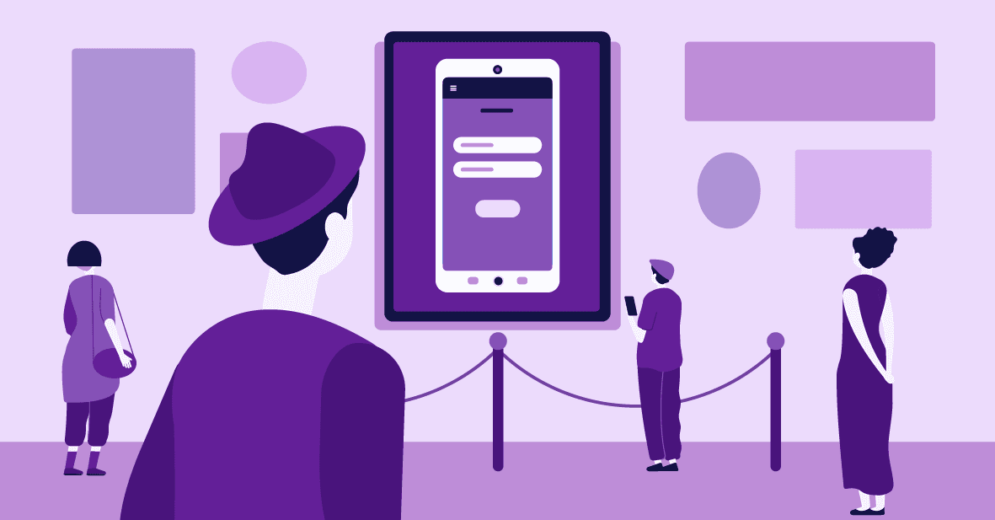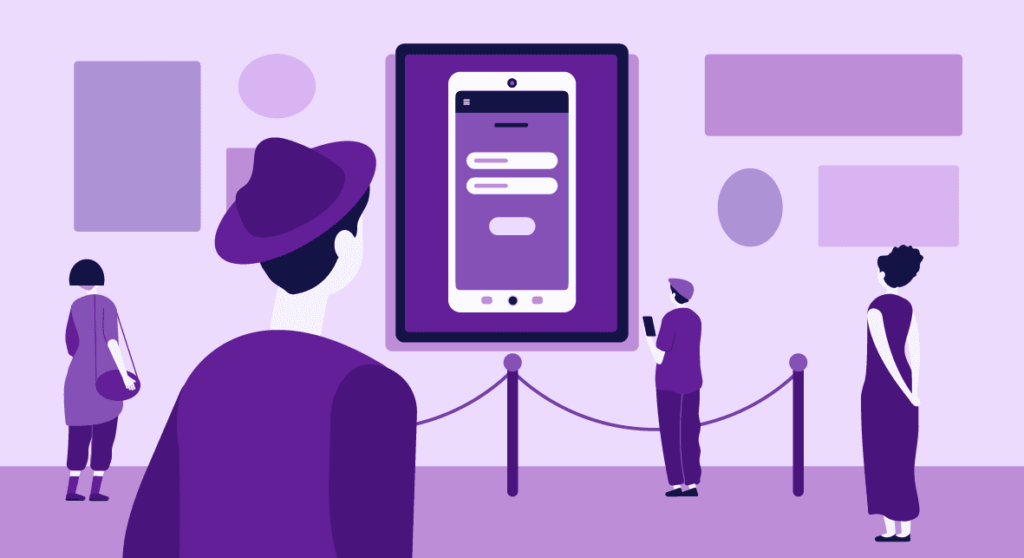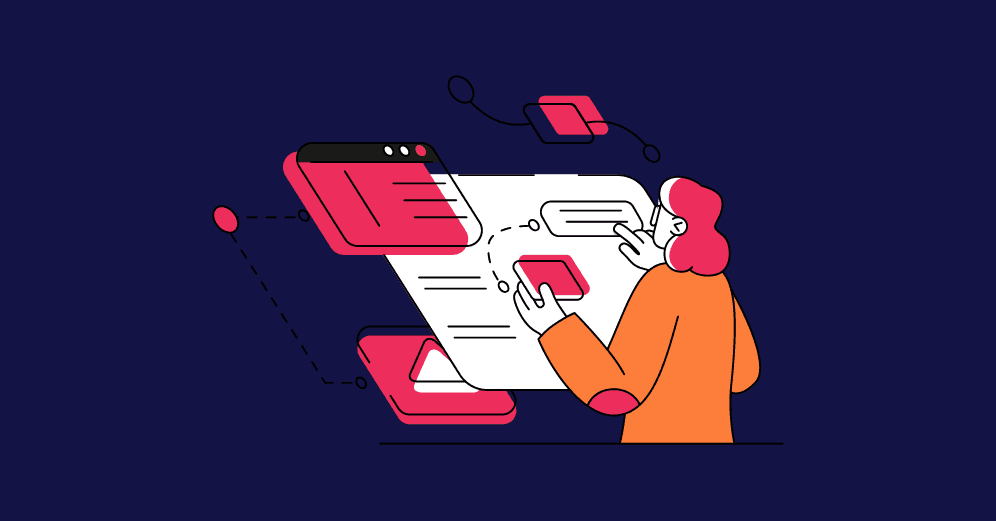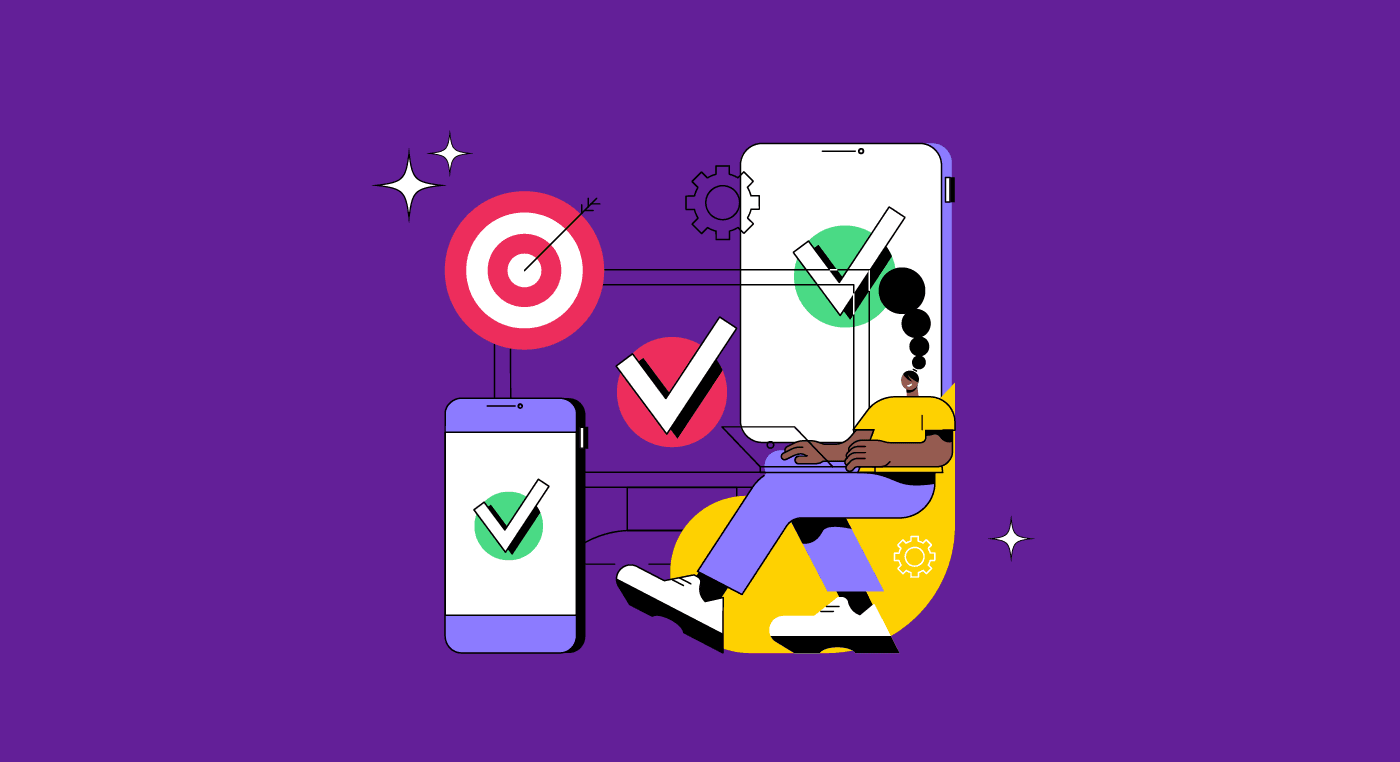UX Design is a relatively recent field, so people who work in this position often face confusion about what their job entails.
It can seem that UX design is all about art and creativity. After all, people working in this field must sketch, develop interfaces and wireframes, and create prototypes. So it can seem rather artistic, right?
But it's not that simple. The UX field relies greatly on engineering and science, turning to objective data to analyze users and scenarios and monitor indicators.
Significantly, many UX theories and concepts are based on the Scientific Method.
Do we have your attention? Great! Please keep reading to learn more about the scientific method and how UX Designers are a bit scientists!
Is UX Design an Art or a Science?
When we think about professions in music, photography, creative writing, or drama, it's easy to associate them with art.
In the same way that engineering, mathematics, or biology are all careers that we instantly relate to science. There's no confusion.
However, some professions are a mix of practices, and the line between science and art can be blurry, which is the case with UX Design.
This confusion might happen because we tend to correlate the creative process of design to art. But UX professionals must also know about business, technology, research, data, and metrics.
Therefore, what prevails? What is the most coherent definition of UX?
To level with them, let's look at the definition of both art and science.
Art vs. Science

Naturally, the answer to what art is opens too many possibilities for discussion; that's not the goal of this article.
The idea is not to enter into subjectivity but to tackle a more straightforward definition to support the following statements.
In summary, one can say that art is a creative form of expression. It is about creating something to trigger emotions in the viewer, or even for an aesthetic purpose only.
On the other hand, when we talk about science, we know it's not about emotions but facts. It's about gaining knowledge that can be validated through scientific evidence.
The essential characteristic of science lies precisely in this concept: the Scientific Method. And this is how we will understand the similarities and differences between Science, Art, and UX Design.
What is the Scientific Method?
Maybe you don't remember, but the scientific method is all about obtaining and analyzing data to find empirical evidence. As a result, the scientific method is an iterative process used to find answers through observation and experiments.
Does this ring a bell to you?
Like science, design processes should always be based on reliable conclusions, not assumptions. Therefore, every design decision must have a reason behind it. And this explanation needs to be backed up by data and evidence.
Notice that the scientific method is not a linear flow but a continuous investigation cycle. Hence, if something changes or new data comes to light, a scientist can go back and repeat steps in any order.
While there are different scientific methods, the main steps are always similar. So we can break this process down into a few fundamental steps:

1) Ask a question
The process starts with a question from something you have observed. How, why, what, where, and when are usually how these questions start.
2) Conduct research
This step is to help you collect information about your question, so you don't need to start from zero.
Internet research is always helpful to check what has already been done, so one can analyze the best way to carry out activities and avoid mistakes from the past.
Sometimes, the same question can be tested many times, aiming to confirm the hypothesis or demonstrate a different point of view.
3) Develop a hypothesis
It's time to formulate a hypothesis, an assumption of how the experiment will unfold.
The hypothesis needs to be something that can be tested and validated – and it will guide the scientist throughout the process.
The following method is used to express a hypothesis and the corresponding prediction:
- If __[I do this] ___, then ___[this]__ will happen.
Remember: predictions must be easy to measure.
4) Putting the hypothesis to test
An experiment should test if the prediction is correct, and it should be repeated several times to ensure the results are not a coincidence or a mistake.
Another important note is that only one factor at a time can be changed, while all other conditions should be kept the same.
5) Analyze data and final thoughts
Finally, whether the results will support the hypothesis or not.
Many times, predictions can be wrong. In these cases, scientists learn from the results, communicate their findings, adapt their hypotheses, and repeat the process all over again.
Sometimes, even if scientists validate a hypothesis, they may want to rerun experiments differently to approach a problem from a different perspective.
To sum up, the scientific method answers questions through experiments and evidence.
Scientific method vs. UX Design methodologies
As shown above, the methodologies used in UX have borrowed a lot from the scientific method process.
Take the Double Diamond, for instance, which consists of 4 distinct phases:
- Discover;
- Define;
- Develop;
- Deliver.

Double D: Discovery and Definition
The discovery and definition stages are related to the initial steps of the scientific method, where you ask a question, research, and define a hypothesis.
Which is equivalent to the classic if-then statement mentioned before, where you have a hypothesis that will lead to a prediction: "If I study at least 2 hours a day, I will do better in the test next week."
In the UX world, this is where designers identify the problem and define one or more hypotheses to solve it. During these stages, professionals get a deeper understanding of the problem by empathizing with their users through research.
Then, by gathering data and insights, designers can unveil users' real problems.
Double D: Developing and Delivering
In the scientific method, the developing and delivering stages are related to experimenting and analyzing results. In school science class, this is when you had to decide what variables would validate the hypothesis.
Whereas in UX Design, it is during these steps that professionals build prototypes to test with users. UX testing identifies success metrics to assess how well the product or service has met the goal.
Just like analyzing the results of an experiment, collecting feedback and data provides evidence to the design team so they can evaluate a product's performance.
Besides the Double Diamond, we can associate the scientific method with other design processes, as follows:
Design Thinking
The process of Design Thinking has three main stages:
- Inspiration: designers learn about their users through research, which we can relate with the question formulation and research process in the scientific method;
- Ideation: solutions are explored, and prototypes are built. In the scientific method, this is when hypothesis and prediction statements are made;
- Implementation: time to test with real users to get feedback and analyze results to iterate. The same process occurs in the scientific method: scientists test the hypothesis through experiments, monitor developments, and repeat.
Lean UX
Lean UX is a method that embraces the Agile philosophy, so it focuses on collaboration. The objective is to obtain feedback early in the process to make quick decisions, and its cycle consists of three main phases:
- Think: defining the actual problem (Problem Statement) to form assumptions and create hypotheses;
- Make: validate the hypotheses by turning ideas into solutions. Designers create a Minimum Viable Product (MVP) to test with real users. The MVP goal is to validate the hypotheses with the minimum effort possible; this includes wireframes, prototypes, etc.;
- Check: testing the hypothesis on real users and obtaining feedback to iterate.
Design Sprint
Design Sprint is a method invented by Jake Knapp at Google, and its objective is to build and test a prototype in just five days. The sprint consists of five steps:
- Mapping: as in the first stages of the scientific method, the 1st day is about building a foundation for the sprint week. Focus on understanding the problem (or choosing a challenge) and researching.
- Sketching: sketching solutions for the problem;
- Deciding: deciding which hypothesis to test;
- Prototype: developing the solution;
- Test: solution validation, by confirming or not the hypothesis created.
With all these examples of popular methods used in UX, it gets easier to grasp the similarities between Science and UX Design.
As you can see, research, hypothesis development, and validation are always present in UX, making the design process consistent, reliable, and efficient.
In addition to these resemblances, we can also relate the scientific method to UX Design from a different perspective: from a psychological standpoint.
Reading tip: Psychological Safety: Trust and Inclusion for Innovation and Efficiency
Psychology and UX Design

On the one hand, we have the practical side of science that has so many similarities with UX Design methodologies. On the other, there's the theoretical part. And that's where psychology enters.
In this sense, it is essential to remember that psychology is a science that studies the mind and its influence on human behavior — to put it simply.
The relationship between UX Design and psychology happens precisely in the importance of understanding users' minds and how the product will impact their behavior to provide them with the best experience possible.
The main psychology fields applied to UX are cognitive and behavioral psychology.
- Cognitive psychology studies themes like memory, perception, attention, language, and the process of decision-making.
- Behavioral psychology studies stimuli and habits that condition people's behavior. In short, why and how people act.
Therefore, psychology is fundamental to UX Design as it contributes to a deep understanding of users and how they react to interfaces.
Observing this way, we can see how much UX embraces scientific concepts to base its theories and practices.
Ultimately, as technology and complex problems evolve, UX Design relies more and more on scientific concepts, getting more rational and less emotional.
What about creativity, intuition, and creation?

If you've read this far, it's clear that UX leans much toward science rather than the arts.
In contrast to this thought, some questions may arise: But what about creativity? The designer's intuition when creating a product? Isn't that part of something artistic?
Let's go over it in steps.
About Creativity
As Susan Weinschenk points out: "Creativity is a process that results in outcomes that are original and of value."
Since it's a process, creativity allows you to have some control over it. Contrary to what many might think, being creative is not about creating freely, nor a way of expressing yourself or something exclusive to artists.
The UX Designer, for example, uses creativity when proposing hypotheses and solutions to solve user needs and, of course, when creating wireframes and prototypes.
But the fact that designers use creativity does not necessarily turn them into artists, specifically because he does not use it to express a feeling or a personal opinion.
Instead, UX designers combine creativity with the scientific method to meet user needs.
Therefore, creativity is part of UX Design, not artistically, but as a process to solve a problem.
About Intuition
When we think about an intuitive person, we imagine someone who has a deeper connection with themselves, perhaps something linked to the unconscious.
Although experienced designers might turn to intuition, it's not about using it to create something, like an artistic expression. But rather, in the ability one has to empathize with users and gain insight from that.
If a person is sensitive and intuitive, it might be easier to connect with users and foresee their pain points.
Therefore, there are two mistakes in saying that intuition in UX Design is related to the arts:
- UX decisions should not be based on personal opinions or assumptions; designers need to assume they are not the user, so research and data are necessary to understand the best way forward;
- Intuition by itself cannot be considered something related to artists. In fact, this association is incorrect.
The science behind UX Design

To conclude, we can look into other aspects that further confirm how UX Design is a science, not an art.
1) UX Design solves problems, art doesn't
UX Design is all about creating something that will solve people's problems. So it has a practical purpose.
Art, on the other hand, doesn't have a clear objective.
Artistic manifestations can identify, criticize or express an opinion on existing problems in the world, but art doesn't have the purpose of solving these issues.
2) UX is not subjective. Art is
UX design must be simple and direct to provide a good product or service. There's no room for subjectivity. Users need to easily comprehend the interface so they can instinctively know how to use it and perform tasks. That's the beauty of it.
Art, on the other hand, is expected to be subjective. Music, paintings, and books make us feel emotions, and everyone reacts differently to them. That's why some art pieces might be hard to comprehend. And that's the beauty residing in it.
3) UX Design is based on the scientific method
To create a good experience, designers must use scientific methods to understand the user, their context, and their needs. As mentioned before, all decisions must be based on data and evidence.
There is no room for guesswork or biases. Instead, the scientific method seeks answers, creates hypotheses, and validates them. And this is precisely the process that UX methodologies should follow.
4) UX Design can be taught
This topic can be debatable. But for us, who work in the industry, UX Design is a competence that can be practiced and learned.
There are even several courses and schools for that. You can learn the theory, concepts, methodologies, and tools to develop good products.
On the other hand, art cannot be taught. Or rather, yes, the theory behind it can be taught: musical technique, photography concepts, the stages of a story. But not the practical side of it.
There is something innate in people who venture into the arts that others can not learn. We can understand the different notes and techniques of playing, but what is the chance of one becoming the next Bach or Beethoven?
In Design, the story is a little different. Anyone can develop a good interface. It takes a lot of study and dedication, but that spark of talent innate to artists is not necessary.
So if you want to change careers and become a UX Designer, don't worry: the pathway is possible!
Final considerations
We talked about how much UX Design relies on science throughout this article. Of course, the idea is not to belittle art and its global contributions.
The main objective was to show a different point of view and reflect on the fact that you don't need to be an outstanding illustrator or graphic designer to succeed in the UX world.
Seeing UX Design as a science promotes understanding of its processes and helps us understand how we should face the challenges in the field.








